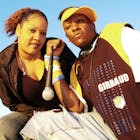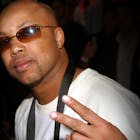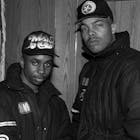
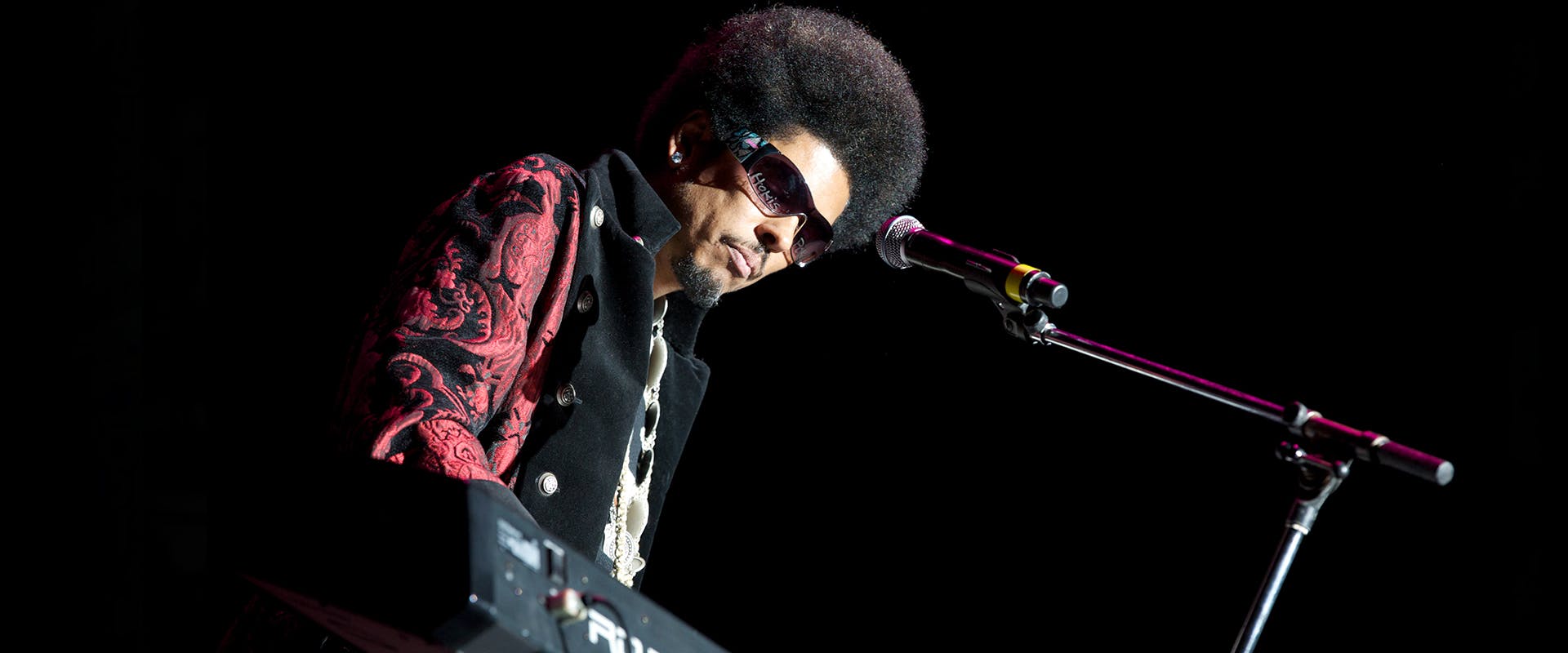
Remembering Shock G
Shock G Remembered: A Musical Genius Hiding In Plain Sight
Published Fri, April 23, 2021 at 5:30 PM EDT
(*)published April 23, 2021
The death of Gregory Jacobs, known to the world was Digital Underground leader Shock G, shocked and stunned a legion of fans, peers and followers.
Jacobs was reportedly found dead at age 57 in a hotel room in Tampa, Florida; and his passing has come on the heels of other high-profile rap deaths, including DMX and Black Rob—who both died just days prior to Jacobs.
The shock of his death has served as a reminder of just how gifted, just how influential and just how important the man was. Digital Underground was one of Hip-Hop's most brilliant, musically rich, and slightly anarchist acts; with Shock G was the slick-talking maestro at it's center. But Shock G was also one of our most gifted producers, a musical savant who absorbed his influences into a heady brew of funk, rap, soul and performance art that has never really been duplicated since.
Digital Underground was formed in the late 1980s when Florida transplant Jacobs formed a duo with DJ Chopmaster J. Jacobs was born in New York City but had moved around the East Coast often as a child, with his family eventually settling in Tampa. He became interesting in Hip-Hop and took on the name "Shah G" before eventually settling on "Shock G." Shock, a DJ/producer/instrumentalist with a serious P-Funk affectation, would team with Chopmaster J after moving West, and forming D.U. They eventually recruited a Hip-Hop duo known as Raw Fusion into the group. Raw Fusion’s Money B and Shock G formed a potent combo; Money’s charming everyman immediately paired well with Shock’s sly maestro shtick, and Digital Underground’s sonic trademarks were all in place. Once 1990s Sex Pockets dropped, Digital Underground was one of Hip-Hop’s most popular and critically-acclaimed acts.
“Shock was and is a real musician," Money B told RTB.
DROP YOUR EMAIL
TO STAY IN THE KNOW
"Before Digital Underground, he was in a funk band. That’s where he comes from. Even his approach, which is something I was fortunate enough to be around and he taught me; he would sequence out the whole song and just play. He would compose a whole musical piece and fill it in with raps. Me being a Hip-Hop head, I write the rhymes and find a beat. He didn’t approach it like that.”
That loose, funky sense of groove, it was born of a strong musical tradition that drew from classic funk, jazz, Hip-Hop; while also personifying a certain lineage that could only come from the Bay. Even as a transplant, Shock embodied the same thing that Sly Stone had before him; a knack for ass-shaking grooves and a musical approach steeped in a sense of community.
Digital Underground definitely has its classic lineup; but the band became an outlet for a revolving door of producers, rappers, singers and DJs over the years, much like Sly's Family Stone wasn't without its myriad lineup changes. Most funk bands took such an approach, and it further likened D.U. to eras past when Funkadelic introduced the world to sonic geniuses like Bernie Worrell, Catfish and Bootsy Collins, Lynn Mabry, Mike Hampton and Eddie Hazel, among others.
And Shock G also tapped into P-Funk's knack for zany theatrics and alter-egos. He told The New York Times in 1991 that his career had been shaped by a chance acquaintance with "MC Blowfish," who was "an aquatic musical creature who roamed the shores of Florida, New Jersey and California trading songwriting ideas with anyone who would listen."
DJ Fuze whimsically added: "I was bodysurfing and got caught in the undertow. Blowfish shimmied up to me and taught me how to swim parallel to the shore."
MC Blowfish was, of course, a Shock creation who starred on "Underwater Rimes," Digital Underground's first single. But Blowfish wouldn't be Shock G's most infamous persona.
Humpty Hump became rap's most iconic alter-ego after 1990s "Humpty Dance" became a sensation and turned Digital Underground and Shock G into stars. And when press asked, Shock had a full Humpty bio ready. "Humpty was a lounge singer in Florida known as 'Smooth Eddie Humphrey,'" Shock explained to the Times. "He was becoming a well-known singer when a kitchen accident ruined his throat and disfigured his nose. To keep his career going, he started rapping instead of singing. I wanted to work with him but he had to do something about that nose, so he started wearing the plastic nose and never took it off."
To wit, sometimes the Humpty Hump character would be played by Shock's cousin, if for some reason, both Humpty and Shock were needed at the same time. But for the most part, if Humpty was suspiciously absent while the rest of D.U. was doing promo or performing, Shock had a ready-made explanation. Like when Humpty was supposedly pouting because "No Nose Job" wasn't the lead single from D.U.'s 1991 album Sons Of The P.
"Humpty's been on an attitude trip and doesn't show up unless he has to," Shock G told The New York Times. "He won't do any interviews until 'No Nose Job' comes out."
Shock G's commitment to his alter-egos was a quirky microcosm of his focus on Digital Underground as an elastic collective of like-minded creatives. While riding high on the success of Sex Packets, the D.U. was joined by a creative 20-year old aspiring rapper who'd moved from the East Coast to Marin County as a teen. Tupac Shakur was taken under Shock G's wing and given a gig as a background dancer on the Sex Packets Tour. And the plan was for 2Pac, Money B and DJ Fuze (as Raw Fusion) and other D.U. affiliates to use the collective's success to launch their own careers. 2Pac championed Shock G's approach to supporting artists.
"I'll give that to Shock G," Pac told Davey D in 1991. "He made it so that everything Digital Underground does, it helps the Bay Area music scene. It grows and goes to New York and hits people from all over the country. That helps the Bay Area."
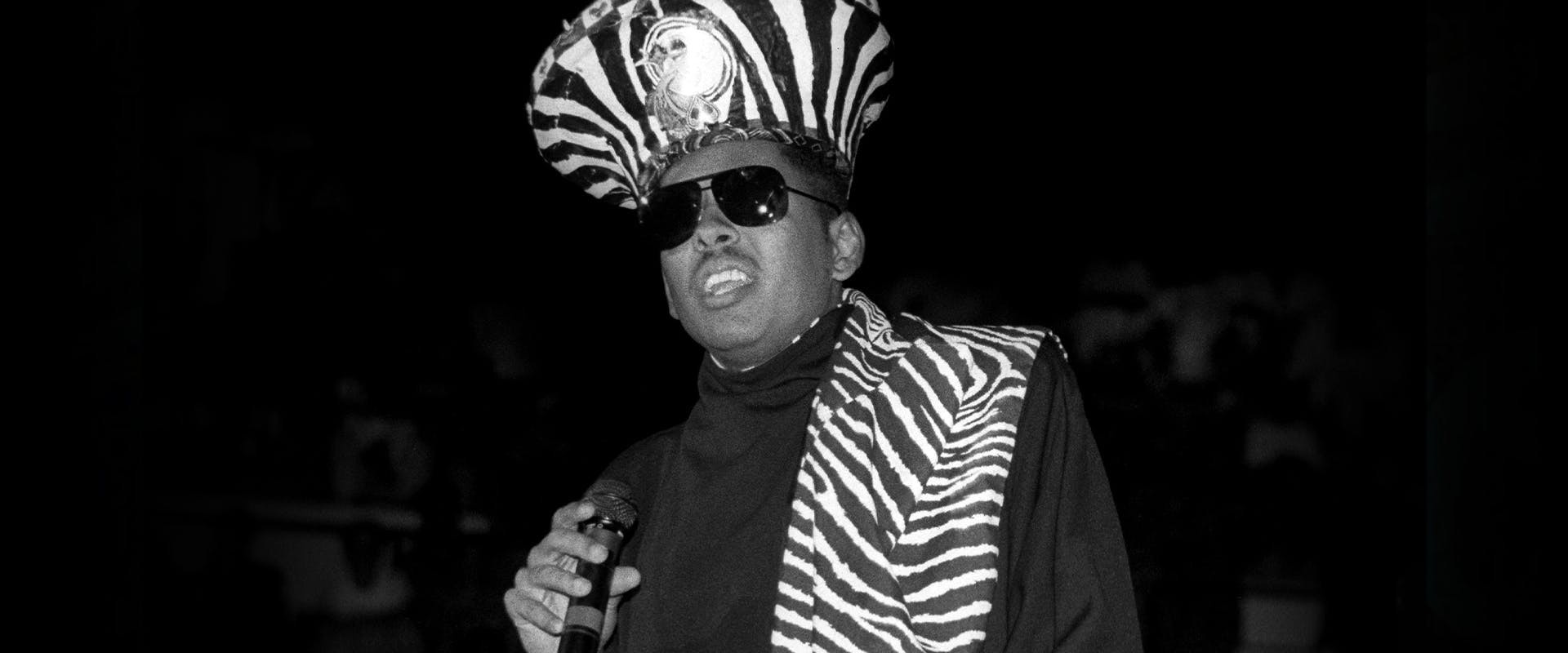
Of course, 2Pac would become one of the most celebrated Hip-Hop artists of all-time. Shock G and Digital Underground oversaw Pac's debut album 2Pacalypse Now, and it was Shock who produced 2Pac's breakthrough single "I Get Around" in 1993 and the somber hit "So Many Tears" in 1995. Even as 2Pac's notoriety and infamy rose, as he became Hip-Hop's most beloved street folk hero, Death Row antagonist and, eventually, martyr, Shock G remained connected to Shakur.
Shock G's friendship with 2Pac seemed like one of the rare positive constants in Shakur's post-fame life. Their time in Digital Underground forever bonded these two men, as Shock had helped bring young Pac into the music business and also sat behind the boards for some of the most memorable moments in Shakur's oeuvre. And Shock G said it was Shock's mother who'd seen it in Pac before anyone else had.
“She said, ‘Watch him, Gregory, he’s got that look. He’s a star,’ ” Jacobs said in 2015. “He had those eyes, showing he wanted it more than anyone else. He needed validation.”
Shock G understood that 2Pac's focus would be different from the funky freewheeling spirit of Digital Underground. Even as they worked on 2Pacalypse Now alongside other projects by Raw Fusion, etc; there was a sense that Pac's approach was going to be different. But Shock G welcomed the chance to showcase that side of himself; producing songs like the topical "Trapped" and giving 2Pac a platform to remind everyone that, raps about Burger King bathrooms aside, Digital Underground always had a message, even if it was more in the spirit of things.
“Our cash cow was Humpty,” Jacobs later told David Lindquist of the IndyStar. “But behind the scenes, all we did all day on the bus was watch Malcolm X tapes. We’re in that zone of Stokely Carmichael/Kwame Toure. So we were excited about Pac. He was the outlet that (record label) Tommy Boy didn’t allow us.”
During a 2017 red carpet interview for the Shakur biopic All Eyez On Me, Shock G said that, at a party, he'd tried to offer Pac his home when the embattled rapper was facing danger.
The video of that interview has gone viral in the wake of Shock's death.
"So I pulled Pac out of the party and I said 'yo, they got two more hits on you, they already got two in Oakland, now two in L.A.—four people are paid to kill you. Take it easy, take my key, live in my condo while I'm on tour. Watch The Jeffersons. Relax.'"
"You know what Pac told me?" Shock G shared. "He said 'You finished? You don't get it, do you? I don't give a fuck.' And walked away."
While speaking to HipHopDX in 2015, Shock gave his take on his friend's final moments in the hospital after emergency surgery to remove his lung. For Shock G, it was easy to believe that Tupac Shakur found peace in death.
"He came to for a little bit, looked around the room, he was listening, he was on machines and stuff but when they told him that, ‘Yo, this and that happened and we had to take one of your lungs,'" Shock G said. "And when he heard that, they said he just went. [He] closed his eyes and let go… He was just like, ‘Me with one lung? That ain’t gonna work. I can’t be Pac with a cane and this and that.’ It would have took the victory of all the things that he’s done and said and I think he’d known that it would have weakened his statement. And his statement was real. He settled for what happened. He let what happened happen. He didn’t know if it was gonna be Vegas but he was kinda asking for that. He was running to it. He just wanted to rest. He couldn’t rest. ‘Pac was tired, man.”


Shock G's musicality stretched beyond Digital Underground and its affiliates. He would eventually work with no less an icon than Prince. In 1998, The Purple One had Shock G remix "Love Sign," a 1994 single Prince had released under a nameless symbol in collaboration with Nona Gaye. Shock G's funk bonafides connect seamlessly to Prince's lineage; another reminder of how his sound has always been born of the funk tradition. And 90s Prince was steeped in the hard-hitting beats and loops of classic Hip-Hop. It was a brief musical melding that made more than a little sense.
When discussing those producers who helped popularize live instrumentation on rap records in the early-to-mid 1990s, Dr. Dre's name looms large. So does the legacy of Atlanta's Organized Noize, whose lush, soulful sonic backdrops made the Dungeon Family standard-bearers for Hip-Hop musicality. But Shock G, with those distinctive keys changes, modulation and piano solos; with those rubbery basslines and slick guitars, helped set that bar. Before "G-Funk" had a name, Shock G was making sure the funk flag flew proudly for the Hip-Hop generation. He tapped into the spirit of George, Bootsy and Co. for an audience raised on Yo! MTV Raps, a creative genius with a unique persona unlike any other in the game. Before RZA launched Wu-Tang Clan, Shock G saw the possibilities in using a rap group to launch satellite acts and solo stars; he saw Digital Underground as a movement and it gave us one of rap's most beloved icons in 2Pac.
"He was ready, he knew he was done here," Shock G said of 2Pac's death in that now-viral clip. "On to his next planet, on to his next adventure, maybe he was reincarnated on Earth, who knows? But Pac wasn't worried about death. He was not scared of death and neither am I."
The death of Gregory Jacobs has hurt anyone who loved the fun, funky spirit of Digital Underground. It hurts for anyone who loved those groovy productions—even on songs as bitter as 2Pac's "Fuck The World." It hurts for anyone who loved having a guy this cool, this funny, and this fucking talented showing us how to do this thing. Some people may have missed his brilliance; as they did The Humpty Dance or rapped along to his "the one who put the satin on your panties" verse from "I Get Around." They may not have totally seen the musical prowess in who he was. But make no mistake, Shock G raised the bar and broke the mold.
Hip-Hop just feels a lot less funky today.
